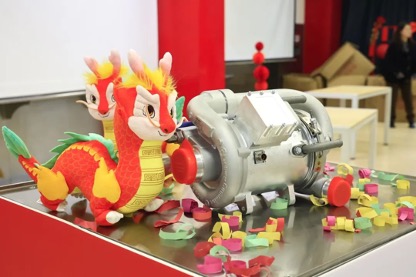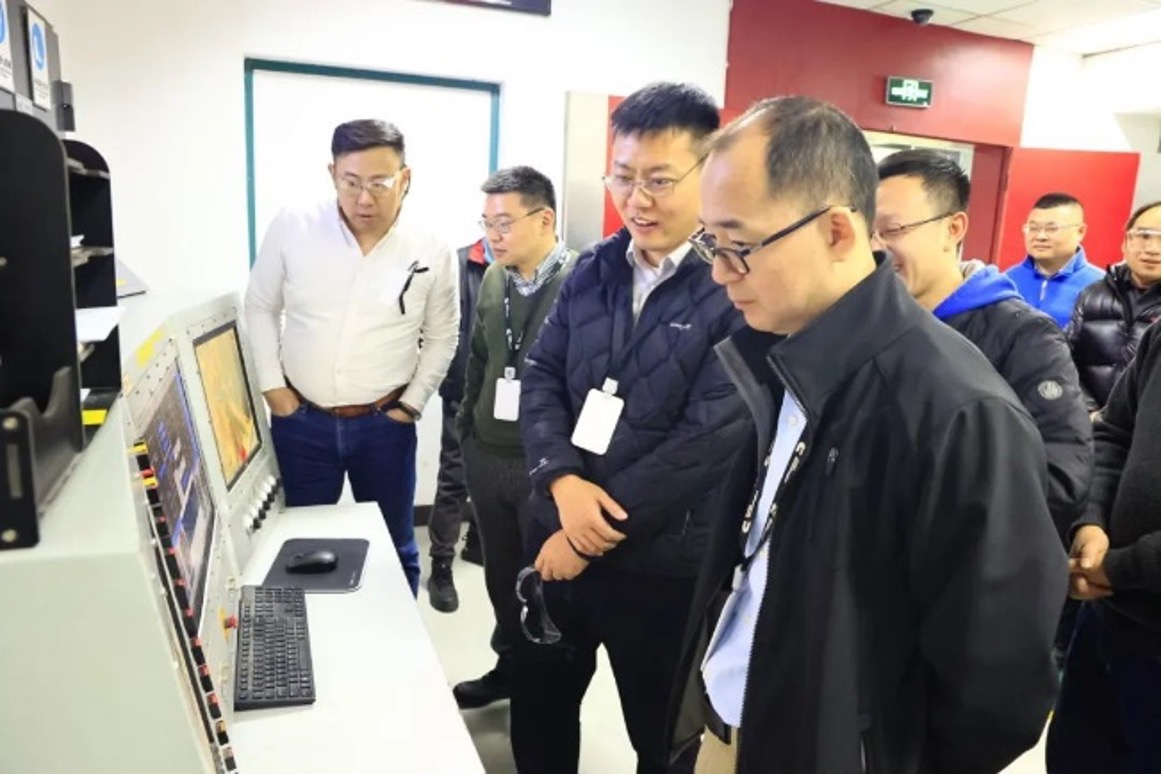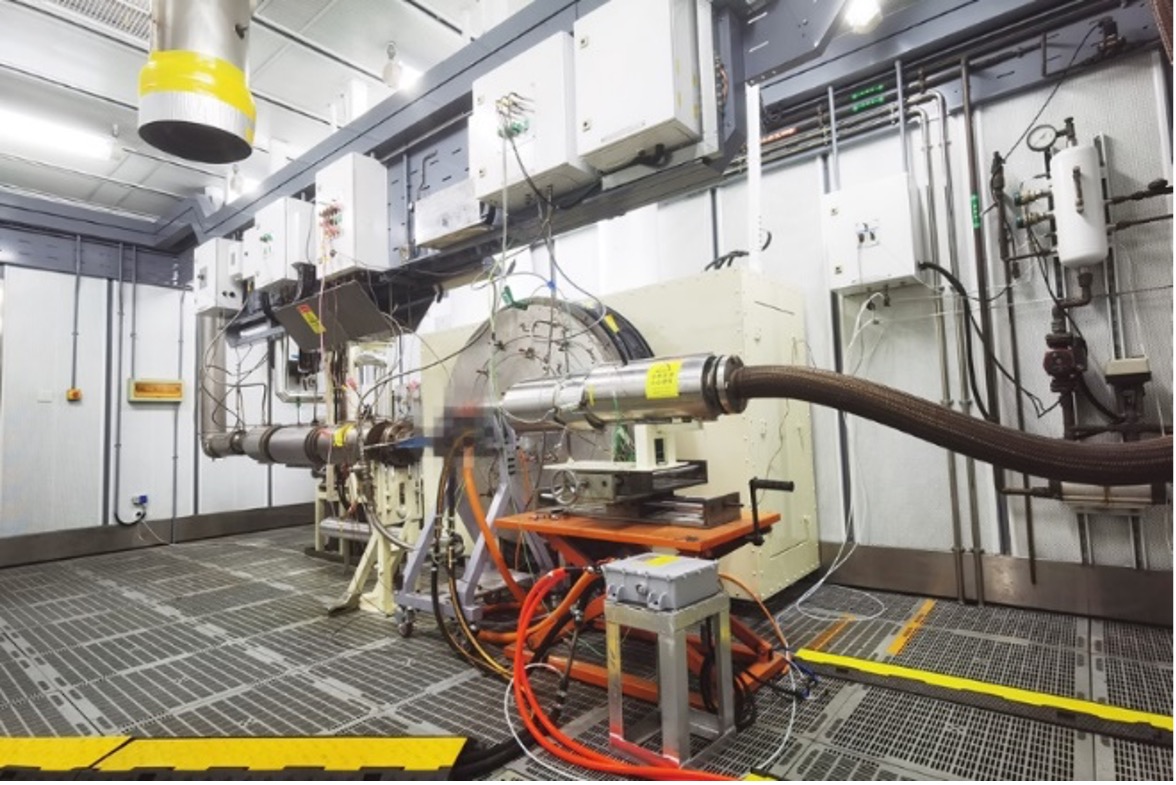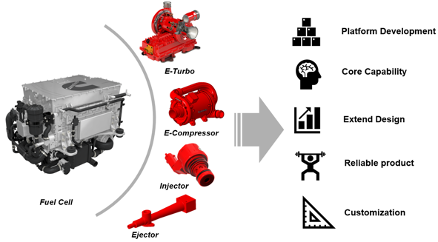Cummins launches its first e-compressor for fuel cell engines
By Cummins Components Business Unit
Cummins Turbo Technologies’ big step towards reducing emissions
CEC (Cummins Engine Components) launched its first e-compressor for fuel cell engine in Wuxi, China on Feb 1, 2024. This is a new milestone for Cummins Turbo Technologies and a big step forward in Cummins Inc.'s Destination Zero strategy for reducing carbon and other emissions. Destination Zero is Cummins’ strategy to go further, faster to reduce greenhouse gas and air quality impacts of our products. This also demonstrates Cummins’ commitment to lead the industry in the transition to a decarbonized future.
Features of the E-compressor for Fuel Cell Engine
The key characteristics of the e-compressor are low noise, high speed, and high efficiency. The e-compressor uses a 45kW high-speed motor with the maximum design speed of 110,000 rpm. It is applicable for 150 - 200 kW fuel cell engines and 240 - 260 kW fuel cell engines under turbine energy recovery.
Here are the features of the e-compressor in further detail:
- Low-inertia rotor design that enables faster start-up and an improvement in acceleration performance. Low-inertia design comes from high pressure ratio design which keeps the package as small as possible.
- Full blade impeller design in noise reduction and facilitates smoother operations. Since blade pass-through noise is primarily caused by the number of blades, this full-blade design has the potential to lower the frequency of blade pass noise to within safer limits.
- High-efficient aerodynamic design utilizes less energy and improves the fuel economy. Cummins has used its hundred plus years of development experience to enhance the impeller efficiency based on the fuel cell requirements.
- Low-thrust loading wheel design offers smoother rotation and higher reliability. Thereby optimizing the two-side impeller sizing to balance thrust load without performance trade off.
- Robust containment design provides larger design margins from containment testing and improves product safety during the running condition.

E-compressor test cell launched with upgraded capability


Cummins also launched the first test cell for the new e-compressor on the same day
The test cell has been upgraded with dual phase controllable power supply, coolant system and optimized pipeline connections, enabling improved testing of performance and endurance capability for E-compressors.
Cummins is scheduled to establish e-turbo testing capabilities later this year as part of a Phase II upgrade for this test cell. A separate air-cooling system will be implemented to expand the controllable range of airflow and enhance the turbine inlet system. E-turbo technology is poised to become the preferred choice for high-power node fuel cell development, and Cummins Engine Components (CEC) is actively engaged in its advancement. The establishment of this e-turbo test capability will facilitate rapid validation and product iteration for Cummins' e-turbo offerings.

In 2023, CEC launched a Zero Emission Engineering Team with members hailing from China, the UK, the US, and India. This cohesive unit implemented a streamlined development cycle, markedly reducing the typical six-month lead time for the first prototype. CEC maintains its dedication to researching cutting-edge technologies and processes to further refine product development, ensuring alignment with customer needs.
Also in 2023, CEC introduced groundbreaking advancements including fuel cell e-turbo, injectors, and ejectors. The e-turbo is tailored for 180-200kW fuel cell engines, while the injector and ejector are designed for 120-300kW fuel cell engines, marking significant progress in the realm of sustainable energy solutions.
Cummins has established itself as a global leader in turbocharger technology and engine components, leveraging decades of innovation to deliver high-quality, reliable products for various applications. With a proven track record of engineering excellence, Cummins is dedicated to creating more sustainable products that not only meet the needs of today but also support customers through the energy transition future. Cummins Engine Components (CEC) will continue to innovate on fuel cell component technologies towards a more sustainable future.
Author Profiles
Related Topics
Related Tags